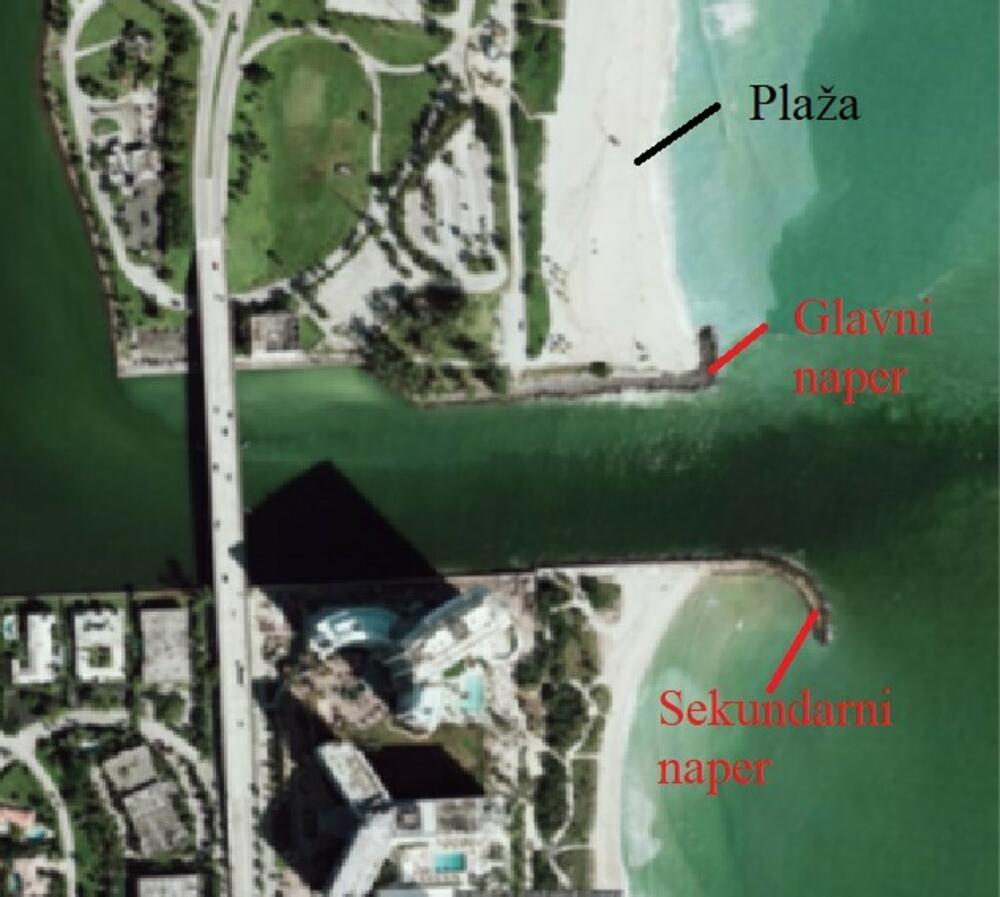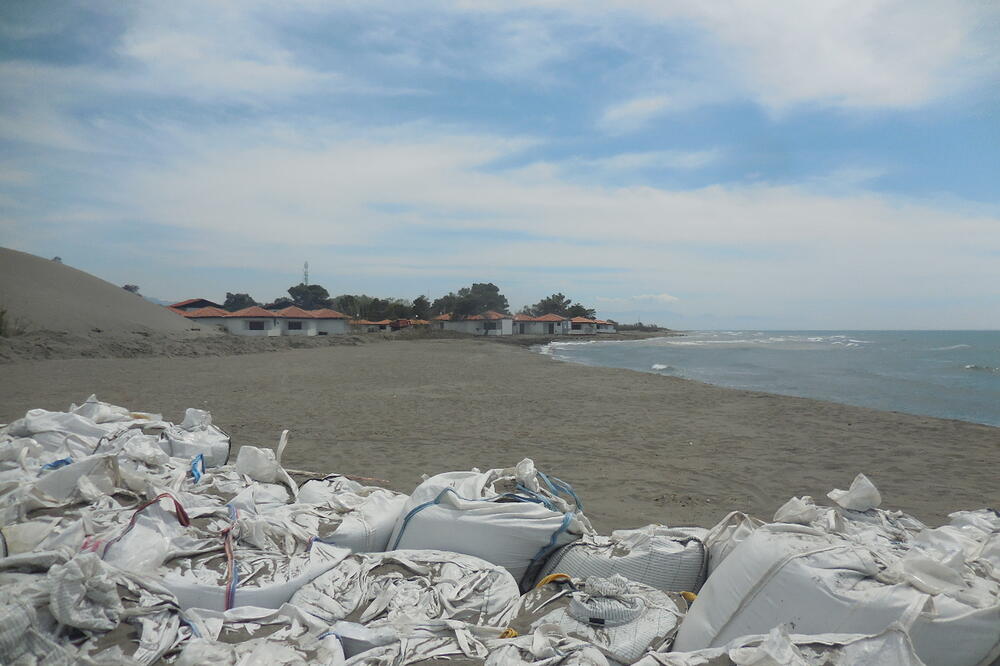The increase in the width of the beach on Ada Bojana during the last two years cannot be attributed to natural processes, but almost exclusively to the influence of the built naper, said to "Vijesta" an expert in hydraulics, hydrology and coastal processes prof. Ph.D Sava Petković from the Faculty of Agriculture, University of Belgrade.
He announced this in response to reports in the media that the beach on Ada Bojana has expanded naturally and to the statements of some officials of the "Ulcinja Riviera" that they do not know the reason for the expansion of the coastal part of the island.
Petković reminded that the results of extensive investigative work in 2020 showed that in the period from 1970 to 2020, about 40 hectares of the beach area on Ada Bojana were lost.
"The process of beach erosion on Ada Bojana has been going on for more than half a century. That process was partially halted by the construction of a sandbag naper in early 2020. I am absolutely sure that the key role in increasing the width of the beach is played by that naper, which was built according to my project. "Although that built naper was disputed both by some locals and by Italian experts, it still has a role to prevent the drifting of sand from the beach in the direction of Velika plaža," explained Petković.
He stated that in American literature such objects are called terminal groins and that they have the role of preventing beach erosion and protecting river mouths or entrances to depressions on sandy beaches from being filled with sand.
“On the long sandy shores of Florida and North Carolina, several dozen final napiers have been built. It must be emphasized, however, that in some cases the built final spurs also cause damage, especially on the opposite banks of the estuary or the entrance to the sinkholes," Petković stressed.
This, he added, also happened on the right bank of the mouth of the right branch of Bojana, because due to the stoppage of sand transport, there was intense erosion of the initial part of Velika plaža.
"But at the end of 2019, there was panic that during the 2020 tourist season there would be no beach in front of the tourist resort on Ada Bojana. The deadline for the development of the project of emergency measures was ten days, and only fifty thousand euros were allocated for the construction of the protective facility. Hence the solution of building a naper made of plastic sandbags", he stated.

SALVATION OF THE 2020 SEASON, A NECESSARY PERMANENT SOLUTION
In the project, he reminded, it was emphasized that it is a temporary facility, to save the tourist season of 2020.
"At that time, no one asked for any analysis of the expected impact on the stability of the adjacent sections of the beach. The exclusive priority was securing the beach for the next season. Unfortunately, after the construction of the napres made of sandbags, no one even thought of creating a project of a final solution for the protection of the beach on Ada Bojana. The naper built of sandbags is still standing, partially damaged and partially covered with sand. However, even in such a state, it still enables the protection and expansion of the beach on Ada Bojana", Petković assessed.
He claims that no one takes care of that pier anymore and that when it disappears, the beach will also disappear.
"According to some data reported in the Montenegrin media, around 30.000 cubic meters of dredged material were dumped on the shore of the beach at Ada Bojana during 2017. Unfortunately, that bulk material was washed into the sea during the first storm, followed by the effect of high-altitude waves. The sand was taken in the direction of Velika plaža because there was no facility to prevent the movement of sand in the longitudinal direction," Petković reminded.
He said that it is high time for the competent institutions in Montenegro to get much more serious about finding a permanent solution to stop the erosion of the beach on Ada Bojana.
In Florida, they know how to prevent coastal erosion
Petković explained that the final piers are built from solid material, most often from stone blocks.
“A typical appearance of the tail fins is shown in a satellite image of the entrance to the Bakers Haulover Basin in Florida. It can be seen that the main final naper provided the formation of a spacious beach. However, in order to prevent the erosion of the opposite shore of the inlet, a second naper was built. By building these two final piers, the entrance to the inlet was also prevented from being covered with sand," explained Petković about the role of the final piers.

Bonus video:





